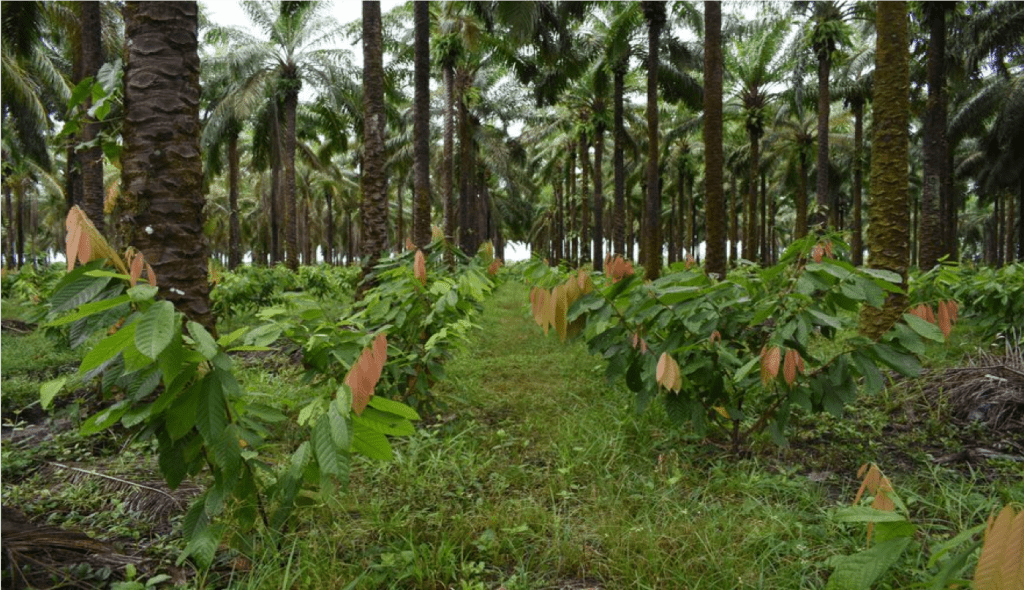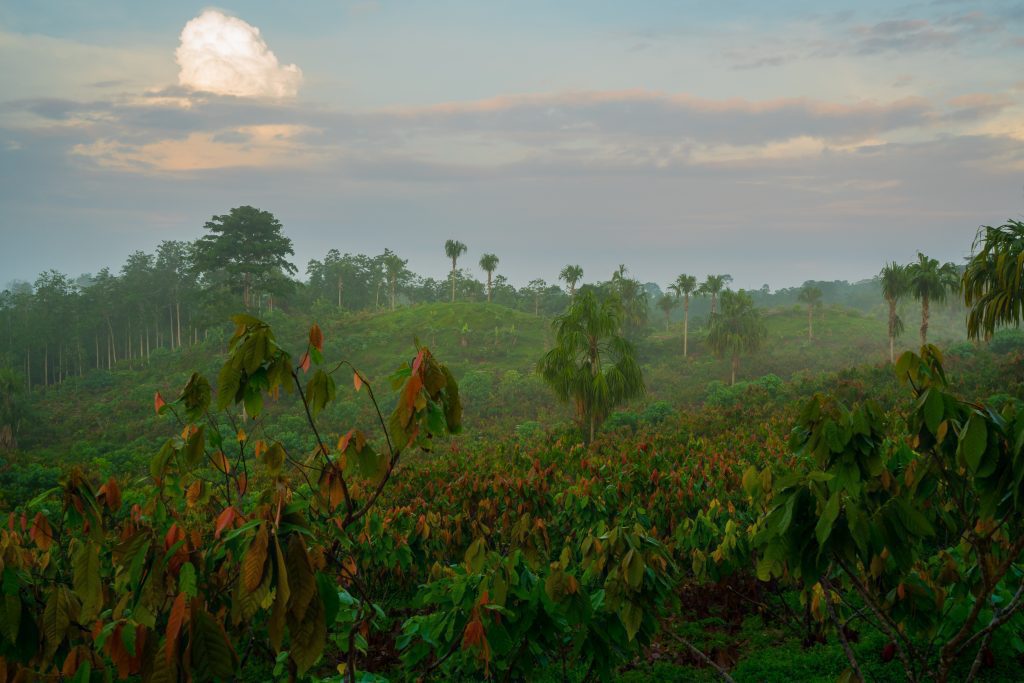“WE WERE THE FIRST PEOPLE WHO DARED TO START A BUSINESS MODEL OF GROWING COCOA IN COLOMBIA USING CACAO FINO DE AROMA CLONES”
Eight years ago, we came to the conclusion that the country had a dispersed model of cocoa development, starting with small producers. Traditionally, the cultivation of cocoa in Colombia was an activity in which farmers used to be very poor; they did not have technological resources or administrative management and did not have the capacity to project their businesses in the medium or long-term.
We came up with a business development model that would stimulate small producers around cocoa. In 2010, Luker Chocolate opted to grow its own crops to help the company satisfy its own Cacao Fino de Aroma needs -without abandoning the relationships established with cocoa associations all over the country-, in order to promote demonstrative agroindustrial projects that would promote large-scale cocoa plantations to drive rural development. In the same year, the company found 550 hectares of land traditionally used for cattle farming in Necocli, Antioquia. It turned this land into its first agroindustrial plantation and the largest agro-productive plantation of varieties of Cacao Fino de Aroma in the country, designed as an agroforestry system (simultaneous and continuous integration of fruit trees and timber-yielding varieties with agricultural crops, which allow greater yields and avoid soil erosion and loss of biodiversity).
Today, the plantation provides employment for over 180 people (it previously employed only 5) and over 600,000 new trees have been planted, leading to high economic, social and environmental impact among neighbouring communities. Here, The Chocolate Dream, our long-term vision to drive change in the cocoa producing regions where we work, was born.
Luker Chocolate was the first company that dared to start a cocoa crop business model in Colombia, specifically, in the cultivation of Cacao Fino de Aroma. In the first place, this required an important change of mentality. This meant a move from having farms to having companies, adopting technology, training human capital, implementing transparent and efficient administrative processes, and, in general, looking at the business on a much larger scale. All this is intended to guarantee results for Luker Chocolate, but also to ensure its vertical integration and the traceability and quality of our cocoa. Additionally, this model radiates examples of good production practices, technological tools and investment models in the area for the producing regions. Likewise, it produces parallel productive initiatives, improves the conditions of the surrounding areas and increases the quality of life of the people who inhabit them. Finally, it has shown the country that it is possible to have profitable large-scale cocoa projects.
The first project was designed in Necoclí, a region that had been damaged by violence and very precarious health and nutrition conditions. It was this project that ended up giving life to The Chocolate Dream. One of the great problems that this country has had is that in the remote regions some infrastructure has been created, but no development has been generated. We have to offer an activity for people to stay in the region, to have something to live with. That is when bridges and roads make sense. In my opinion, the Luker Chocolate cocoa cultivation business model works because it is a motor of economic development. If you do not economically develop a region, the bridge and the community centre don’t work. If there is one factor that generates money and moves the economy, development in these regions becomes possible. That’s why The Chocolate Dream works in Necocli.
Necocli was the first of several projects that the company intends to plant, followed by a double-sized plantation in Casanare department, in a crop previously used for the production of oil palm. The Casanare project has 1000 hectares of cocoa in an agroforestry system with palm, which today has generated 500 formal jobs.
Likewise, the development of another anchor crop in the department of Huila is expected, as part of an initiative to promote the planting of cocoa in that department. The main objective of the anchor crop is to provide on-site support to farmers in the region as part of a large promotion program in which other inhabitants are invited to plant cocoa. The goal is to expand the cocoa crop in the region with 350 new hectares of cacao and 450 hectares of crop renovation in 6 municipalities, which would impact 375 families.


 Share
Share
 Tweet
Tweet
 Share
Share






